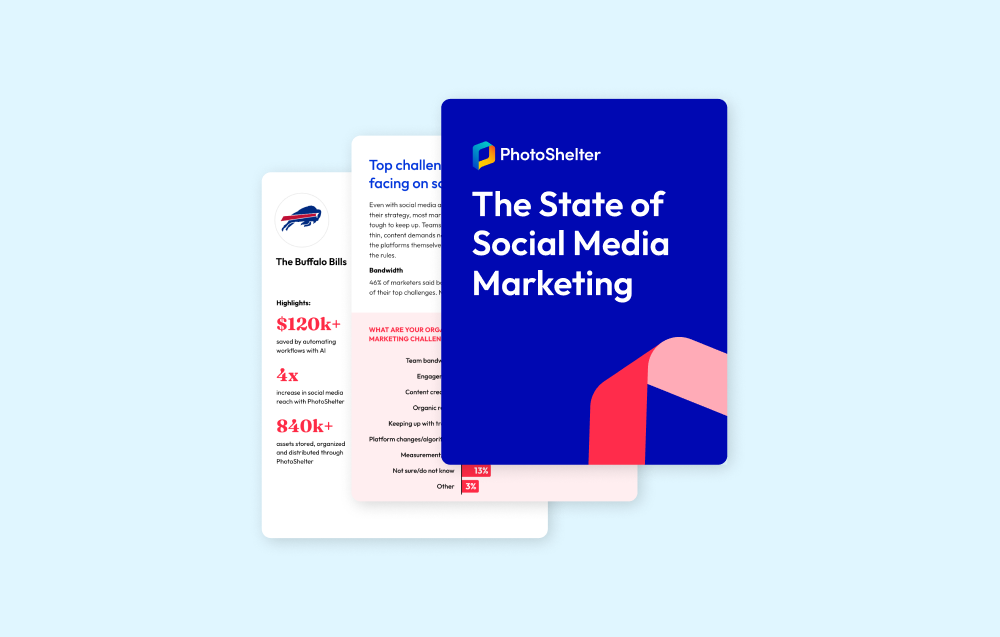Share
Stock vs Real Patient Photos: What Healthcare Marketers Should Know
Learn how stock photography measures up to authentic content as healthcare marketers consider visual storytelling in their content strategy.

Many healthcare marketers rely on stock photography for promotional materials. However, teams may struggle to reach the right audience with currently available stock options.
According to a recent study, “The majority of images related to health topics on stock photography sites are of light-skinned people within a fairly narrow age range, making it more difficult – and expensive – for organizations to create health education materials aimed at reaching other groups.”
Why Stock Photos Are Used Often in Healthcare
According to PhotoShelter, CEO Andrew Fingerman, in an interview with Swaay.Health, here’s why healthcare marketers often leverage stock photos to drive marketing efforts:
“The demand for content increases in parallel with the need for speed,” explains Andrew. “But, creating original imagery is a huge investment, both in time and resources:
- Healthcare marketing teams often operate with limited budgets and lean teams, making dedicated content creation challenging.
- As a result, stock photography is common in the industry due to its cost-effectiveness and convenience.
- Stock images also provide healthcare marketers with high-quality, relevant visuals without the need for a full content production team.
But healthcare marketers need to be careful. Andrew emphasizes,
“Relying too heavily on stock photos can cause you to blend in and look like every other provider, making it extremely challenging to stand out and differentiate yourself.”
Andrew Fingerman, CEO, PhotoShelter
How does stock photography actually measure up to authentic content? Here’s a breakdown:
Stock Photos vs. Authentic Patient Images
- Website Performance: Authentic images convert better. In one study, authentic images converted 35% higher than stock photos in A/B testing.
- Patient Engagement: Stock photos often showcase over idealized healthcare scenarios, creating a disconnect in actual patient experiences.
- Competition Differentiation: Marketers are all pulling from the same pool of stock photos. If brands look identical, you confuse patients trying to make a choice.
- Brand Risks: If you download images from free stock sites, you could be violating copyright laws.
Stock Photo Alternatives
- Professional photography: A single batch of 35-50 photos with a professional photographer is comparable in price to what you would pay to license the same number of stock images.
- Infographics & illustrations: Simplify complex medical information to make difficult topics more approachable and offer appealing and informative content.
- User-generated content: Tell authentic patient stories (with consent) that will resonate with your audience.
How Hartford HealthCare Does It
Hartford HealthCare (HHC) is a network of hospitals, ambulatory sites, and care facilities with over 500 locations serving 185 towns and cities across Connecticut and beyond.
Chris Rakoczy is a documentary event photographer based in Hartford, Connecticut. He works closely with hospitals to produce images used for brochures, editorial stories and more. Here are his thoughts on stock imagery and how he captures authentic patient stories through his lens.
When taking photos of patients, what is your approach to sensitive situations?
I always recommend that a provider – typically a nurse – who already has a relationship with the patient to ask [for permission to photograph] in advance, even if it’s only a few minutes before. They already have a rapport and are sensitive to the patient’s needs, appearance and personality. Once they get permission, they introduce me and we have them sign a Patient Media Consent Form.
It’s not just the patients you have to be sensitive to, however. I’m often shooting in a care unit where patients’ Private Health Information (PHI) is all over the place on charts, computer screens, dry mark boards, etc.
You have to be aware of PHI in foreground and background, eliminate them from your frame, obscure them with shallow depth of field, or as a worst case, obscure them in post-processing later.
PHI isn’t just written information. It can even be in the context of a photo. For example, inferring someone has cancer simply because they’re near the Infusion Center sign. It’s not just about direct patient information you can read, but what story the overall picture tells about the patient.
“We’ve all seen instances of stock photos that depict a stylized version of healthcare and in doing so, portray incomplete equipment and improper technique. There is a lot done in a clinical setting to keep patients safe.When shooting real patients and real providers, we need to portray them in compliance with industry and facility-specific rules and regulations.”
Chris Rakoczy, staff photographer, Hartford HealthCare
What advice do you have for healthcare marketers working with photographers for the first time?
My advice would be similar for any marketer working with any photographer for the first time. They should provide enough information for the photographer to be able to do their job in support of your goals. Vague direction and lack of support can result in subpar results and rework.
Ready to Improve Your Healthcare Content Strategy?
Take the Healthcare Content Check-Up to assess the current health of your content strategy. Discover where you stand and get actionable insights to elevate patient engagement and brand authenticity.


